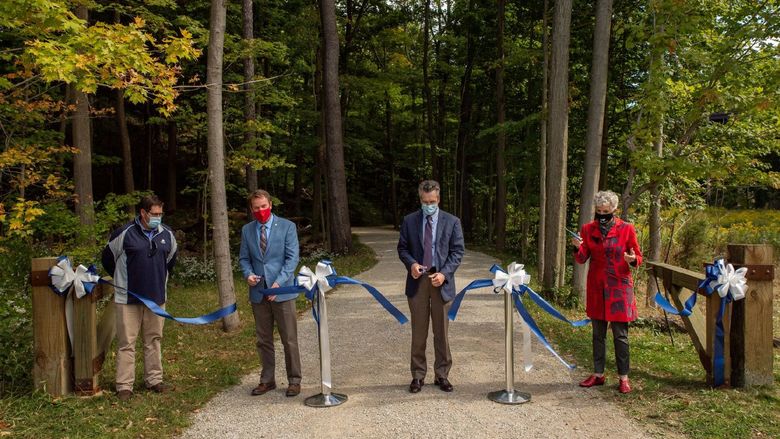ERIE, Pa. — Below deck on the R/V Lake Guardian, the largest of the U.S. Environmental Protection Agency’s research vessels, Ann Quinn secured what she could, boxing lab samples as the ship see-sawed through rough water.
The Guardian was caught in a 300-year storm. To the south, in Wisconsin, the governor had declared a state of emergency. Two men had died as water swept over the roads, cutting all access to Ashland. A sheriff’s deputy, his car carried off by the water, had clung to a tree for two hours until rescuers could throw ropes to him.
Quinn, the director of Greener Behrend, a student-centered sustainability program at Penn State Erie, The Behrend College, would have to ride the storm out. She was four days into the Lake Superior Shipboard Science Workshop, a weeklong education program coordinated by Sea Grant’s Center for Great Lakes Literacy and the EPA. She grabbed a bulkhead for balance.
“In a storm event, the ship’s foghorn blows every seven minutes,” she said. “That night, it was constant, and it went on for hours.”
The storm damaged or destroyed 85 boats, most of which had anchored at Saxon Harbor. The Guardian escaped harm. In the morning, the crew resumed its research; for Quinn, that meant lowering a plankton net, hoping to snare spiny water fleas.
The fleas, which are native to Europe and Asia, were carried into Lake Huron in ballast water in 1984. By 1987, they had spread to all of the Great Lakes, and to the Allegheny River.
A long, barbed tail protects the flea from small fish. Unchallenged, the species has spread, disrupting the lowest levels of the food web. A study of Harp Lake in Ontario linked the flea to a decrease in zooplankton, a crucial food source for young native fish. Anglers complain about the fleas clumping on their lines, forming masses that look and feel like wet cotton.
Other researchers on the Guardian analyzed the lake’s water quality and clarity and searched for invertebrates that live in sediment on the lake’s floor. They used a PONAR, a tethered metal claw that clamped shut on lake sediment, which was filtered and rinsed on the ship’s deck, and a Rosette, a wire cage holding 12 cylinders that collected water samples at different depths.
“A lot of workshops are kind of fluff and talk,” said Lori Danz, a high school biology teacher from Wisconsin. “This was different. This was gritty and hands-on and ‘get in there and learn.’”
The group also visited the Stamp sands on the Keweenaw Peninsula, a four-mile stretch of blackened beach. Stamp sand is a byproduct of copper ore processing: Mine operators used stamp mills to crush rock and extract copper, then deposited the remains in or near the water’s edge. Much of it has since washed onto the Keweenaw, coating the shore with a black sand that contains arsenic and other heavy metals.
“It looked like the surface of the moon,” Quinn said. “There’s just a long stretch of black beach, totally devoid of life.”
The Guardian’s shipboard-science trips are designed to build a teaching and research network of Great Lakes educators. Quinn used data from the trip in a presentation at the annual conference of AASHE, the Association for the Advancement of Sustainability in Higher Education. With Marti Martz, a senior outreach specialist at Pennsylvania Sea Grant, she is now training Penn State Behrend students to serve as Great Lakes watershed stewards, leading hands-on ecology lessons in schools across Erie County.
“Those stewards will go out to K-12 classrooms and build awareness about our watershed,” Quinn said. “One of the tools we’re developing is a water filter, which will show how pollutants and unwanted substances can be removed from the Great Lakes. When you see that, and you watch it happen, you really do understand why this matters.”
Robb Frederick
Director of Strategic Communications, Penn State Behrend


